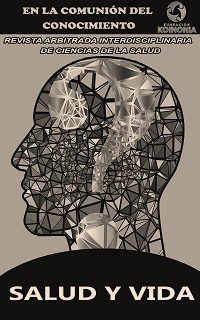Therapeutic futility and family obstination in intensive therapy: the perspective of the nursing professional
DOI:
https://doi.org/10.35381/s.v.v7i1.3605Keywords:
Intensive care units, intensive care units, pediatric, intensive care units, neonatal, (Source: DeCS)Abstract
Objective: To analyze therapeutic futility and family obstinacy in intensive care: the nursing professional's perspective. Method: Documentary descriptive. Results and Conclusion: The relationship of nursing with therapeutic futility in intensive care rooms continues to be a topic of interest, due to the growing trend of avoiding the suffering of the terminally ill. The adequacy of the therapeutic effort is currently a good clinical practice, which must be protocolized and applied in the country's health institutions, so that a consensual approach is carried out and based on scientific evidence, contributing to timely decision-making. and ethics on the therapy to be used, in such a way that the main beneficiary is the patient, avoiding unnecessary or futile measures that cause pain or conflicts in the physical, emotional or economic sphere, both to the patient and their family.
Downloads
References
Ryan RE, Connolly M, Bradford NK, et al. Interventions for interpersonal communication about end of life care between health practitioners and affected people. Cochrane Database Syst Rev. 2022;7(7):CD013116. https://doi.org/10.1002/14651858.CD013116.pub2
Coats H, Bourget E, Starks H, et al. Nurses' Reflections on Benefits and Challenges of Implementing Family-Centered Care in Pediatric Intensive Care Units. Am J Crit Care. 2018;27(1):52-58. https://doi.org/10.4037/ajcc2018353
Kane RL, Shamliyan T, Mueller C, Duval S, Wilt TJ. Nurse staffing and quality of patient care. Evid Rep Technol Assess (Full Rep). 2007;(151):1-115.
Dees ML, Carpenter JS, Longtin K. Communication Between Registered Nurses and Family Members of Intensive Care Unit Patients. Crit Care Nurse. 2022;42(6):25-34. https://doi.org/10.4037/ccn2022913
González-Gil MT, González-Blázquez C, Parro-Moreno AI, et al. Nurses' perceptions and demands regarding COVID-19 care delivery in critical care units and hospital emergency services. Intensive Crit Care Nurs. 2021;62:102966. https://doi.org/10.1016/j.iccn.2020.102966
Chowdhury D, Duggal AK. Intensive care unit models: Do you want them to be open or closed? A critical review. Neurol India. 2017;65(1):39-45. https://doi.org/10.4103/0028-3886.198205
Ervin JN, Kahn JM, Cohen TR, Weingart LR. Teamwork in the intensive care unit. Am Psychol. 2018;73(4):468-477. https://doi.org/10.1037/amp0000247
Bento AFG, Sousa PP. Delirium in adult patients in intensive care: nursing interventions. Br J Nurs. 2021;30(9):534-538. https://doi.org/10.12968/bjon.2021.30.9.534
Niven DJ, Laupland KB. Pyrexia: aetiology in the ICU. Crit Care. 2016;20(1):247. https://doi.org/10.1186/s13054-016-1406-2
Stéphan F, Ghiglione S, Decailliot F, Yakhou L, Duvaldestin P, Legrand P. Effect of excessive environmental heat on core temperature in critically ill patients. An observational study during the 2003 European heat wave. Br J Anaesth. 2005;94(1):39-45. https://doi.org/10.1093/bja/aeh291
Vincent JL. The continuum of critical care. Crit Care. 2019;23(Suppl 1):122. Published 2019 Jun 14. https://doi.org/10.1186/s13054-019-2393-x
Engwall M, Fridh I, Johansson L, Bergbom I, Lindahl B. Lighting, sleep and circadian rhythm: An intervention study in the intensive care unit. Intensive Crit Care Nurs. 2015;31(6):325-335. https://doi.org/10.1016/j.iccn.2015.07.001
Gélinas C. Pain assessment in the critically ill adult: Recent evidence and new trends. Intensive Crit Care Nurs. 2016;34:1-11. https://doi.org/10.1016/j.iccn.2016.03.001
Avdalovic MV, Marcin JP. When Will Telemedicine Appear in the ICU?. J Intensive Care Med. 2019;34(4):271-276. https://doi.org/10.1177/0885066618775956
Ednell AK, Siljegren S, Engström Å. The ICU patient diary-A nursing intervention that is complicated in its simplicity: A qualitative study. Intensive Crit Care Nurs. 2017;40:70-76. https://doi.org/10.1016/j.iccn.2016.12.002
Published
How to Cite
Issue
Section
License
Copyright (c) 2023 Jorge Paul Herrera-Miranda, Neris Marina Ortega-Guevara, Lupita Melania Armijos-Campoverde, Maria Aidé Dávila-Quishpe

This work is licensed under a Creative Commons Attribution-NonCommercial-ShareAlike 4.0 International License.
CC BY-NC-SA : Esta licencia permite a los reutilizadores distribuir, remezclar, adaptar y construir sobre el material en cualquier medio o formato solo con fines no comerciales, y solo siempre y cuando se dé la atribución al creador. Si remezcla, adapta o construye sobre el material, debe licenciar el material modificado bajo términos idénticos.
OAI-PMH: https://fundacionkoinonia.com.ve/ojs/index.php/saludyvida/oai.









